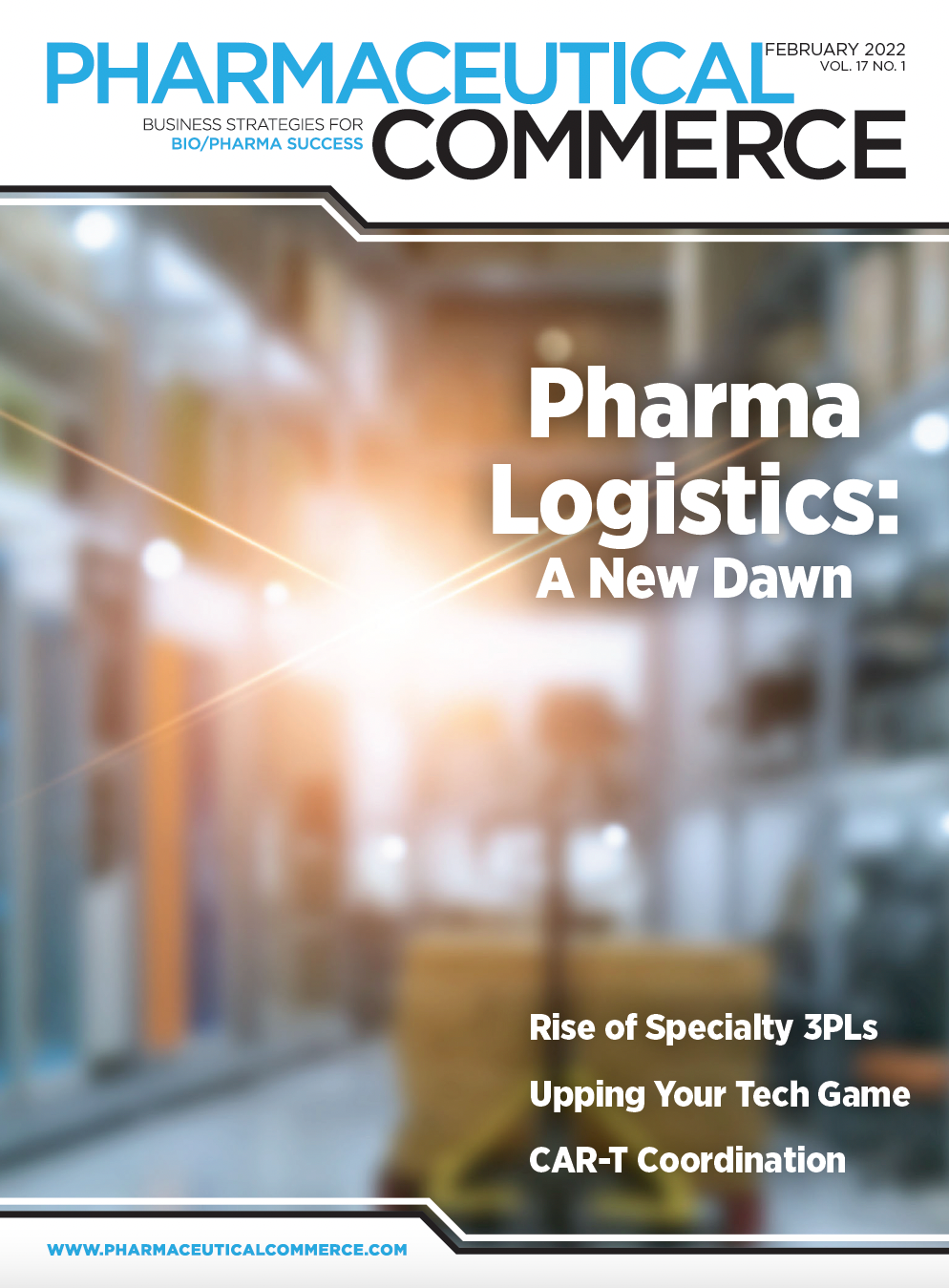The Shifting Course in Logistics Support
Today’s ideal pharma third-party logistics (3PL) provider brings the right mix of physical assets, internal expertise, data analytics and strategic partnerships to function as a seamless extension of a manufacturer’s internal operations—no matter what disruptions arise
In the context of the biopharma/life sciences/healthcare sectors, the concept of third-party logistics (3PL) conjures images of vast warehouses with forklifts, acres of pallets and shelving and specialized personnel providing pick-and-pack services to help coordinate the delivery of medications and medical devices to pharmacies and retail stores, clinics and hospitals, interim warehouses and patients at home. However, today’s buffet of 3PL offerings is so much richer than that, and the specialized companies that offer 3PL services have continued to expand their offerings, to both keep up with and stay ahead of their pharma partners’ needs.
“Logistics operations in the life sciences and healthcare sectors are complex—with no margin for error—given the life-sustaining and lifesaving nature of pharmaceuticals, biologics, vaccines and the essential equipment and supplies moving through our supply chains,” says Jim Saponaro, president, life sciences and Healthcare, DHL Supply Chain. The confluence of pandemic response and the need for enhanced temperature control against the backdrop of seasonal supply fluctuations and a strict regulatory environment have created considerable upheaval and strain in the global supply chain.
“Limited physical space, technology advances and talent are all highly valued within the pharma/life sciences industry, and as a result, drug manufacturers want to focus those resources on the activities that create the greatest value to the bottom line, and outsource those activities that do not,” says Phil Wilson, chief operating officer, Cryoport, Inc. This creates opportunity for specialized companies that have expertise in handling various 3PL activities, and can maintain the dedicated, temperature-controlled warehouse space and personnel, along with other packaging, transportation and monitoring assets. “Our pharma clients are able to focus their time and effort on creating life-changing innovations that help people live healthier lives; we help to get their critical therapies to providers and patients quickly and reliably,” says Hany Salama, VP and general manager, third-party logistics, RxCrossroads by McKesson.
“The ideal 3PL partner provides end-to-end service capabilities that address unique product requirements,” adds Scott Fata, associate director, supply chain and operations for Accenture. “Such companies must provide data visibility and integration into clients’ legacy systems and be able to quickly detect and react to any excursions that may happen during shipping (such as delays or temperature changes), to safeguard product integrity and security.”
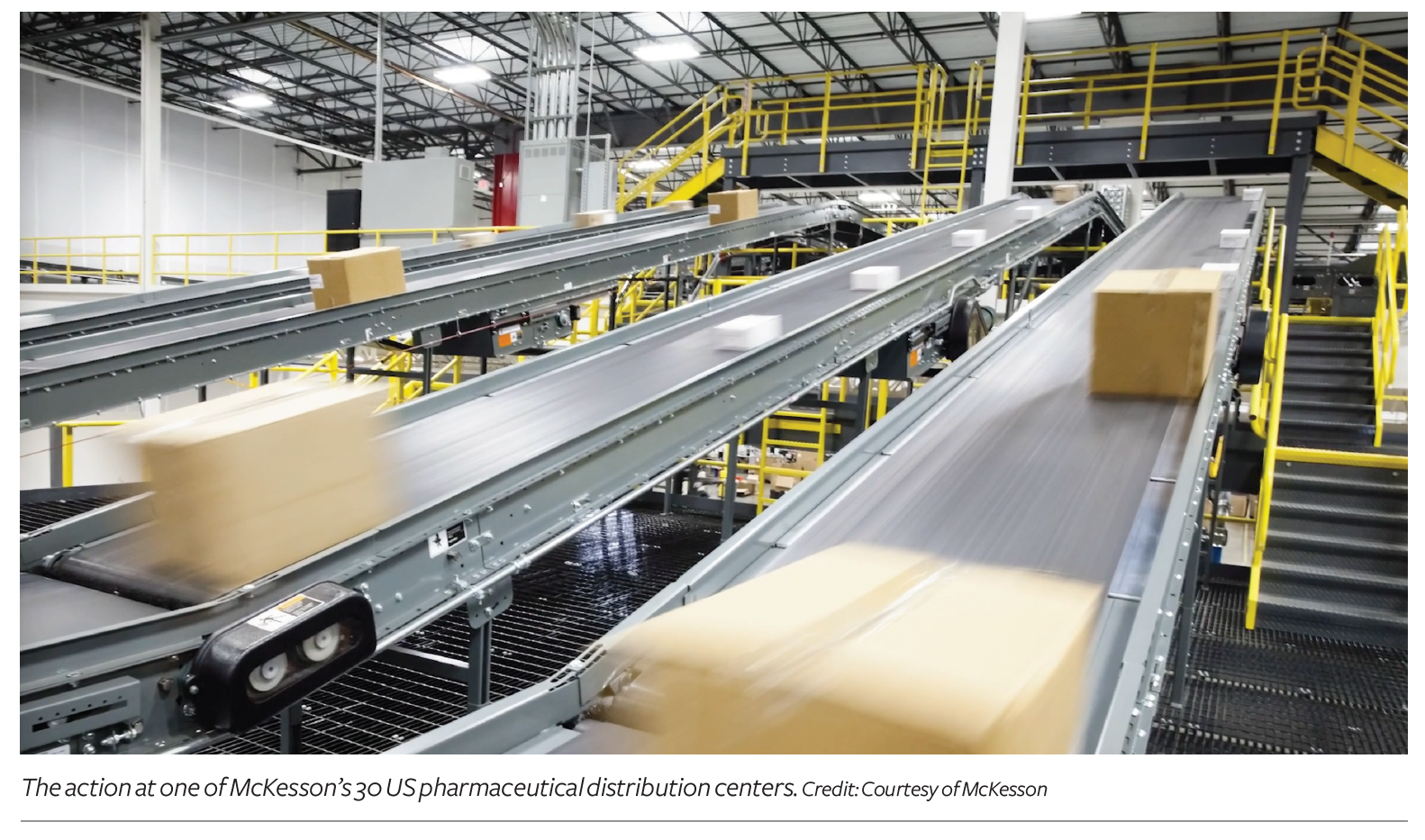
Given the sensitive nature of so many of the pharma products that are transported all over the world today, maintaining package visibility is Job 1. The Covid-19 pandemic, of course, has spotlighted this mission. For example, through its UPS Premier technology, UPS Healthcare focuses on providing real-time visibility into the precise location of each single vaccine package—“down to within three meters of its location anywhere in the UPS global network,” says Dan Gagnon, VP of global marketing and Strategy for UPS Healthcare.
More tasks, more asks
Today, the ability to outsource key activities to 3PL partners is equally important to drug manufacturers at both ends of the spectrum—larger established pharma organizations with a broad portfolio of products that must move through different distribution channels, and smaller companies and startups that typically cannot justify or maintain the overhead or expertise, physical infrastructure or staffing needed to manage the full suite of business-continuity capabilities, notes Albert Cooksey, SVP, general manager, 3PL Services for ICS, a division of AmerisourceBergen.
“The large, established pharma companies don’t typically need a full outsourced 3PL solution, as they have much of the infrastructure and capabilities already in place,” adds John Blackington, VP, business development, Life Science Logistics (LSL). “But large players still tend to seek 3PL support for specialized therapies and products that don’t fit neatly into their existing portfolio or warehousing and distribution infrastructure.”

The types of support services any pharma company needs to enable speed to market and ensure patient access to medications will, by necessity, change over time. “What may be working today may not be a best practice a year from now, so staying on top of the trends and ongoing forecasting is essential,” says Blackington.
3PL partner hallmarks
“The goal of any 3PL company is to work in lockstep with their pharma clients, to be a necessary part of the business,” notes Cooksey. “Close collaboration with 3PL partners is often the best way to launch a new product, to help take advantage of existing scale and expertise that does not exist within their own companies.”
Robert Coyle, SVP, healthcare for Switzerland-based Kuehne+Nagel, adds: “This era of Covid-19 has changed the way in which people look at the supply chain—creating what might be called ‘business as unusual’—and this has created many new challenges.” Hence, the ability to leverage the expertise, physical infrastructure and economies of scale of today’s 3PL experts offers a stabilizing force, helping pharma manufacturers to pivot and operate reliably in the face of unforeseen problems—related to, for instance, the pandemic, weather, political unrest, volume volatility, transportation issues, supply chain pinch points and shortages of everything from labor to transportation assets, to raw materials and packaging materials.
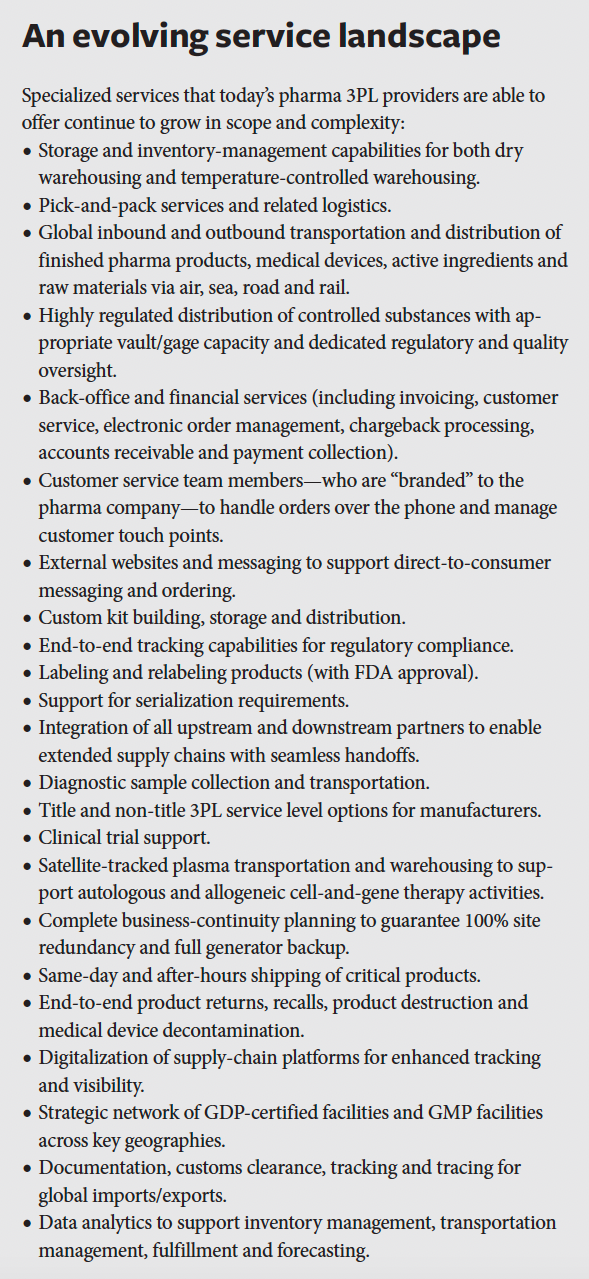
“The ability to balance visibility with supply chain standardization as much as possible can help all stakeholders to face today’s challenges with the right level of agility,” adds DHL’s Saponaro.
Essentially, clients are expecting their 3PL partners to function like seamless extensions of their own internal operations, notes Wilson of Cryoport, adding: “The winners in the space will be those companies that can demonstrate their competence and value, and offer ancillary, value-added functions.”
Many current 3PL providers use a control tower or command center approach to help strengthen critical supply chain visibility and resiliency, notes Accenture’s Fata. Such a technology platform helps 3PL providers to uncover and mitigate risk by synchronizing transport, providing enhanced visibility on shipments in transit and minimizing daily operational risks. “The enhanced real-time visibility that is possible using a control tower approach helps 3PL providers to quickly identify rising risk and to pivot as needed to optimize deliveries,” adds Saponaro.
One particular area of growth for 3PL providers is the need to support pharma manufacturers’ complex title and non-title licensing needs. “Our 3PL title model provides missing capabilities for manufacturers who have not yet completed the acquisition of state licenses before their product launch,” explains Salama of RxCrossroads. “We are able to leverage our own distribution licenses and purchase product from the manufacturer to sell to customers based on contractual requirements.” This offering allows companies—especially emerging biopharma who may not have the resources to gain all the state licenses —to go to market much sooner.
Salama continues: “In our non-title model, we are able to act as the manufacturer’s agent to ship and sell product on their behalf. This provides a flexible model to fit the manufacturer needs, from full order to cash, fulfillment only, or storage of product.”
Another trend that is helping to shape the 3PL landscape is the acceleration of in-home healthcare and telehealth—“partially a result of the pandemic but a trend that will continue to be an important factor in the industry moving forward,” says Gagnon of UPS Healthcare. “Patients now expect greater flexibility and customization if their care can be offered from the comfort of their homes, so it will be important for 3PL providers to work with their pharma customers to provide seamless communication and transparency with patients, and to manage the data being collected.”
Similarly, serialization requirements that mandate unique numerical identifiers for pharma products that can be tracked through every handoff in the supply chain are designed to help combat counterfeit medications and safeguard both patient lives and drug company earnings. Such efforts will continue to add challenges for 3PL providers, creating massive data-gathering and handling requirements.
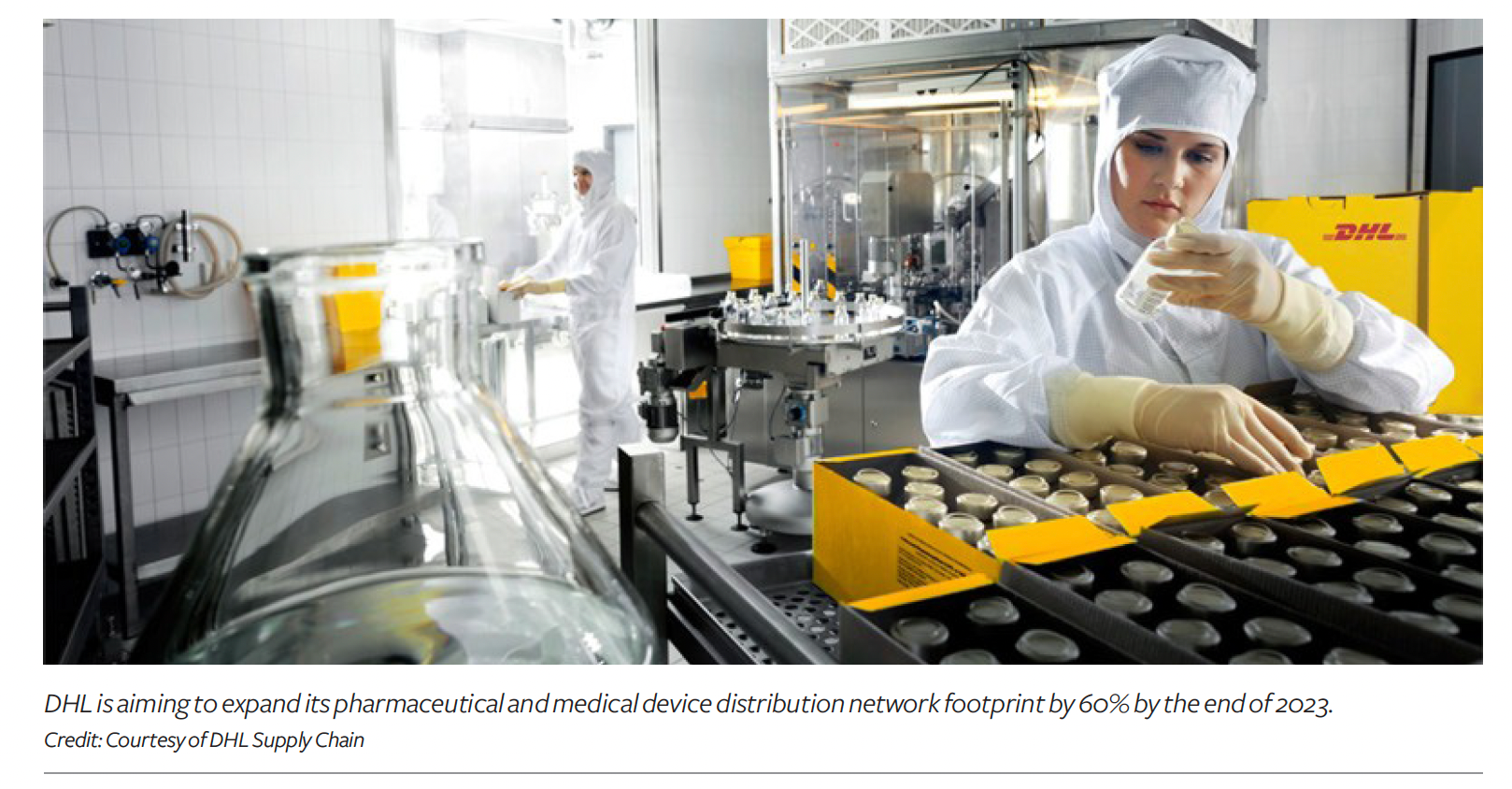
“We have the ability to support serialization and are trying to stay at least a year ahead of the curve,” says ICS’s Cooksey. “We’re working on both the inbound and outbound processes now, even though the outbound process won’t be required for a few more years.”
Pending new requirements under the Drug Supply Chain Security Act (DSCSA) set to go into effect in November 2023, including a fully DSCSA-compliant track-and-trace system, are also keeping many 3PL players up at night. “DSCSA will require increased scrutiny in terms of knowing what item is in which case on what pallet,” says John Wirthlin, industry principal, manufacturing, transportation and logistics for Zebra Technologies. This must be done, he stresses, with high accuracy without slowing down shipments in the supply chain, and it will be critical as well for companies to have the ability to capture serialization data and events in real-time. “The 3PL organizations that stand out today are those that are investing in advanced data-capture technology to set themselves apart from the competition,” says Wirthlin.
LSL’s Blackington agrees, noting: “It’s important for all 3PL providers to understand what’s coming down the road, and to build capacity and capabilities to stay ahead of clients’ space requirements and needs.” He says LSL periodically conducts market surveys to identify key geographies where added investment makes long-term strategic sense.
Accenture’s Fata, citing a shifting product portfolio mix into “newer science,” such as cell and gene therapy, points out that 3PL labor issues and shortages can make it difficult to keep lead times and fulfillment commitments.
Several 3PLs recently announced capacity expansions and other strategic investments to strengthen their regional capabilities. They include:
- J. Knipper and Company, Inc. completed the expansion of its distribution center in Charlestown, IN. The growth includes an additional 150,000 sq. ft. of space, which offers refrigeration capacity of 1,500 pallets and a drive-in freezer.
- LSL added a new 132,000 sq. ft., mixed-use, controlled-temperatures (20–25°C) and cold-chain (2–8°C) storage and distribution facility in Research Triangle Park, NC, and a 440,000-sq.-ft., multi-client facility near Indianapolis, bringing the company’s US footprint of FDA-regulated storage and distribution space to more than 4 million sq. ft.
- DHL Life Sciences, which operates more than 35 dedicated life sciences facilities in the US, has a planned investment to expand its pharmaceutical and medical device distribution network footprint by 60% by the end of 2023 (adding more than 5 million sq. ft.), with nine new US sites and two building upgrades.
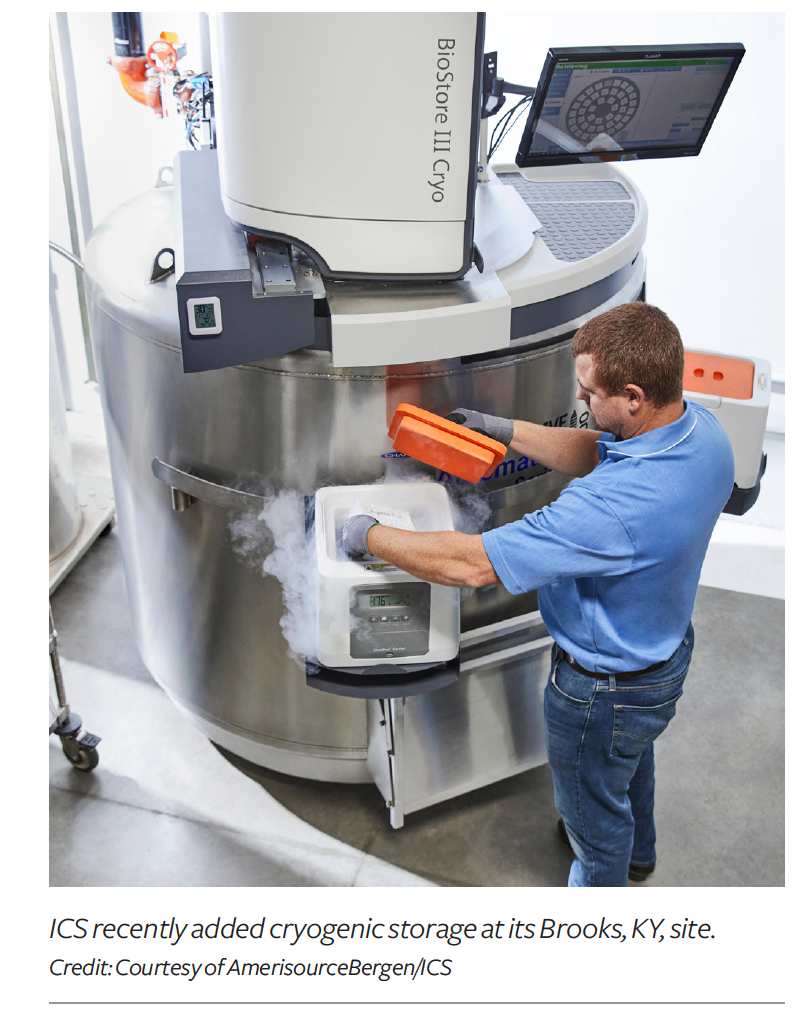
- UPS Healthcare announced construction of two new good distribution practice (GDP)-compliant, healthcare-licensed distribution facilities in Italy and Australia, as well as expansions and cold-chain retrofit projects in The Netherlands, Czechia, Poland, Hungary and the US. UPS is also adding eight new locations (New York, Miami, Amsterdam, Paris, Melbourne, Sidney, Tokyo and Seoul) to support subsidiary Marken’s global network of cell and gene therapy centers of excellence, bringing the total to 14 certified sites. These will augment existing sites in Los Angeles, San Francisco, Philadelphia, London, Frankfurt and Singapore.
- Cryoport has opened a new global logistics center in Singapore, following the opening of one in Osaka, Japan, in late 2020, to strengthen its footprint in the Asia-Pacific region. The company also acquired F-Airgate, a provider of temperature-controlled supply chain solutions, headquartered in Brussels, and Critical Transport Solutions Australia Pty Ltd., and entered a strategic partnership with Cell Matters, S.A., to deliver cryopreservation services to support autologous and allogeneic cell and gene therapies.
- Cardinal Health has partnered with Ember Technologies to offer the Ember Cube, which is said to be “the world’s first self-refrigerated, cloud-based shipping box” to ensure cold-chain product integrity and security with reduced shipping waste.
- RxCrossroads 3PL services recently opened a new, 1-million sq. ft. pharmaceutical distribution center in Shepherdsville, KY, dedicated to large- and small- molecule drugs and ambient, refrigerated and frozen therapies, including one of the Covid vaccines.
- K+N is launching the Seaexplorer disruption indicator to measure the efficiency of the global container shipping network. The indicator shows the cumulative waiting time in days at several key ports around the world, along with advanced analytics and trends on the current situation impacting the globe. K+N is also expanding capacity in Belgium, the US, Singapore and Korea to support multiple temperature requirements.
- ICS has expanded its distribution center in Ohio and opened a second facility in Kentucky. The AmerisourceBergen unit plans to add another 115,000 sq. ft. to its footprint in Kentucky later this year. These efforts will raise ICS’s managed warehouse space to more than 1 million sq. ft. over three strategic locations. The company is also adding 2,500 pallet positions of cold-chain storage, and recently added additional cryogenic storage capacity, along with the ability to commission and apply unique serialized labels on cryogenic products, in its Brooks, KY, location.
In addition to footprint and capacity expansions, many 3PL providers today are investing in automation and artificial intelligence (AI) to support a number of operations. “Warehouse and carrier labor shortages are accelerating the need for AI and robotics in order to meet client needs, and AI is also growing in use to help 3PL providers to better understand exactly where the product is in the supply chain at any time,” says Joel Wayment, VP of operations, Cardinal Health Third Party Logistics Services.
“We are also making continued investments in our online ordering platform to support drug manufacturers’ customers,” adds Wayment. “To drive ongoing improvement, we recently released an advanced self-service solution to minimize the time it takes to get things done and the number of ‘touches’ a transaction takes to complete.”
Of course, the human touch never falls out of favor in these pursuits. “A high customer experience, in terms of responsiveness and communication, and strong order-to-cash management are also highly valued differentiators for 3PL providers,” says Wayment. “Not getting the order-to-cash management piece right can not only have an impact on a manufacturer’s reputation in the market but can negatively impact its financial stability as a company.”
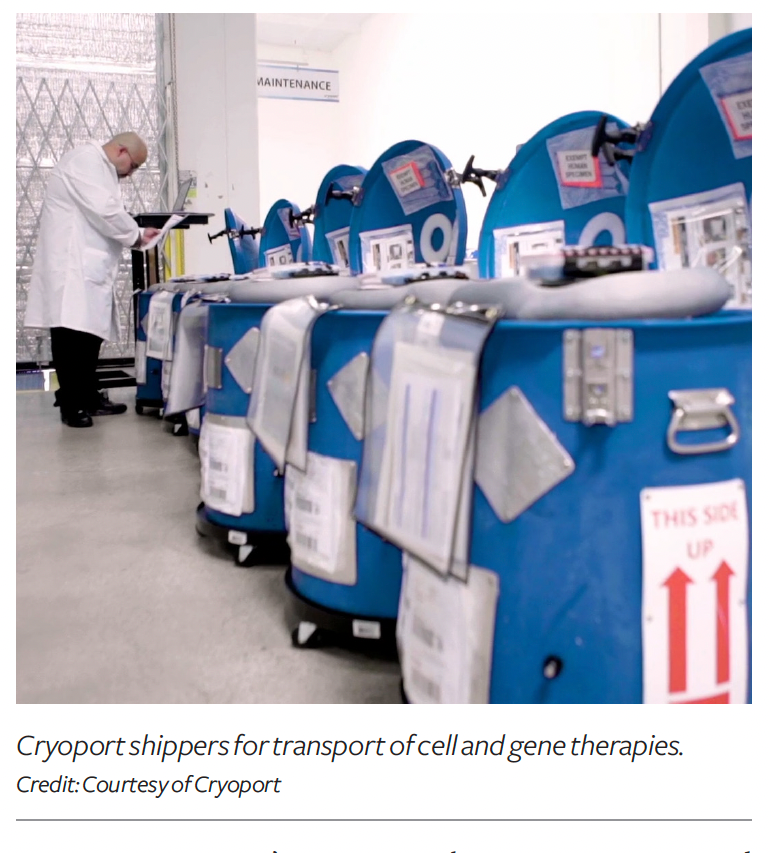
Lessons learned in the era of Covid
During the many ups and downs of the coronavirus pandemic, efforts to create business continuity have left drug manufacturers and their 3PL partners feeling like they have been hanging onto the reins of a bucking bronco. “From the onset of the pandemic, we knew the crisis would shift and reshape the way in which the healthcare industry operates,” says Gagnon of UPS Healthcare.
“Covid-19 quickly showed the vulnerabilities in many companies’ supply chains,” adds Cryoport’s Wilson. “Even robust and well-designed supply chains got caught up in the world’s collective pause.”
According to Gagnon, 3PLs, much like drug manufacturers, ministries of health, foreign governments and humanitarian organizations, immediately coordinated on getting personal protective equipment (PPE) and Covid tests, vaccines and therapies to those in need. “To support our proprietary cold-chain technologies and logistics services, we expanded coolers and new freezer farms, invested in dry ice manufacturing equipment and in thermal packaging solutions, and with these new developments and technologies, we’ve accomplished more within the last year than we thought possible,” adds Gagnon on UPS’s efforts.
“The goal is always to ensure that our transport and supply-chain processes flow as efficiently as possible, based on experience and innovative analysis tools,” says DHL’s Saponaro. “Those 3PL providers that already operate large, diversified networks of physical assets on the ground, have been able to leverage alternative facilities and transportation routes to keep products moving in the face of sudden interruptions, such as Covid outbreaks at a facility, catastrophic weather situations, geopolitical instability and other travel or supply chain disruptions.
For instance, DHL’s e-commerce business grew at a record rate during the pandemic, says Saponaro, adding: “We were able to seamlessly move personnel from other temporarily interrupted businesses to help support those growing e-commerce requirements.”
ICS routinely has alternative distribution options available within its network, and “playbooks and protocols in place, so we could pivot quickly, as needed,” says Cooksey. “People often think of business-continuity planning as a large-scale process, but in the era of Covid, we all saw that it also has to be done on a more micro scale—for instance, with improved planning and investments made by manufacturers of critical components, such as freezer units, gel packs and insulation,” he adds.
Meanwhile, the accelerated timelines of vaccine development and rollout in response to the Covid paradigm helped to create other best practices. “Our ability to get involved with the vaccine developers very early on—before the Covid vaccines were even approved—to help develop and coordinate the most efficient supply chain proved itself to be a winning strategy, and is certainly applicable in other therapeutic spaces that require specialized, cold-chain distribution going forward,” says K+N’s Coyle. “It’s important for 3PL companies to get involved in the process as early as possible to work through the details—not waiting for the RFQ to be published—because having early-stage conversations and iterating through the evolving data and regulatory requirements can help to build in the needed flexibility and agility.”

For smaller 3PL providers, nurturing strategic partnerships to enable greater reach on short notice has also proven to be a valuable business practice. “We don’t own the planes, trains and automobiles, so to speak—that’s not our core competency—but we continue to develop and maintain strong relationships with all of our partners, so we are able to provide our customers with the best options to optimize the route and provide reliable delivery every time,” says Blackington of LSL. Such partners include packaging companies, engineering design experts, transportation partners and specialists in packaging design, facility design and transportation-lane access.
Shaking hands across the aisle with competitors is another best practice that has emerged. “While it’s always been a part of our strategy to make significant investments in our global infrastructure, there will always be situations in which it makes good strategic sense for us to partner with other 3PL companies, so we can remain nimble yet still get the job done,” says Coyle.
“All of my competitors are also my partners in different regions when we need to work with others to further strengthen our own capabilities in certain geographic regions,” he continues. “We’re acting on behalf of our clients, so in some situations or some geographies, working closely with other 3PL companies and logistics providers helps us to react quickly and create the most efficient and least disruptive supply-chain solution.”
In recent years, K+N has also advanced a concept the company refers to as fourth-party logistics (4PL). “The 4PL concept is used to provide more integrated logistics by strategically enlisting other global 3PL providers that can bring their own specialized capabilities—not necessarily by adding physical assets—to enable full planning around transportation, booking of orders, last-mile delivery issues and more,” says Coyle.
He adds that the control tower the used to support the 4PL concept uses a single platform to collate data, and uses AI-supported applications to turn that data into actionable information, so that complex logistics processes can be orchestrated dynamically. “The control tower is not just a data or software service, but rather a collaboration involving people, processes and systems that adds sustainable value,” Coyle contends.
Another key to minimizing supply-chain disruptions also lies in planning and adopting the latest technology. DHL, for instance, says Saponaro, is constantly searching out for innovations such as driverless forklifts and picking-assisted robots.
In a 2021 survey carried out by Zebra Technologies, the company found that more than 40% of surveyed patients and pharma industry decision-makers say regulators and pharma manufacturers are the ones most responsible for combating stolen, counterfeit and contaminated medicines. “In order to alleviate patients’ fears and improve the traceability and safety of medications, 3PLs need to be able to meet regulatory compliance with a high degree of accuracy and speed, says Wirthlin.
“These evolving patient demands will certainly be a wakeup call for pharmaceutical industry leaders who, for years, have been primarily focused on meeting regulatory standards,” he adds. “Manufacturers, government agencies, pharmacies and healthcare providers must work together to win consumers’ trust in the supply chain.”
“We hang our hat on the customization and flexibility aspect of our offerings, because every pharma/biotech/life sciences customer has a very specific set of needs,” reminds Blackington. “So, in a sense, we’re creating a new business model for each and every one of them. The goal is to keep a finger on the pulse of industry-wide challenges and to help plan for the next hurdle that may be coming down the pike.”
